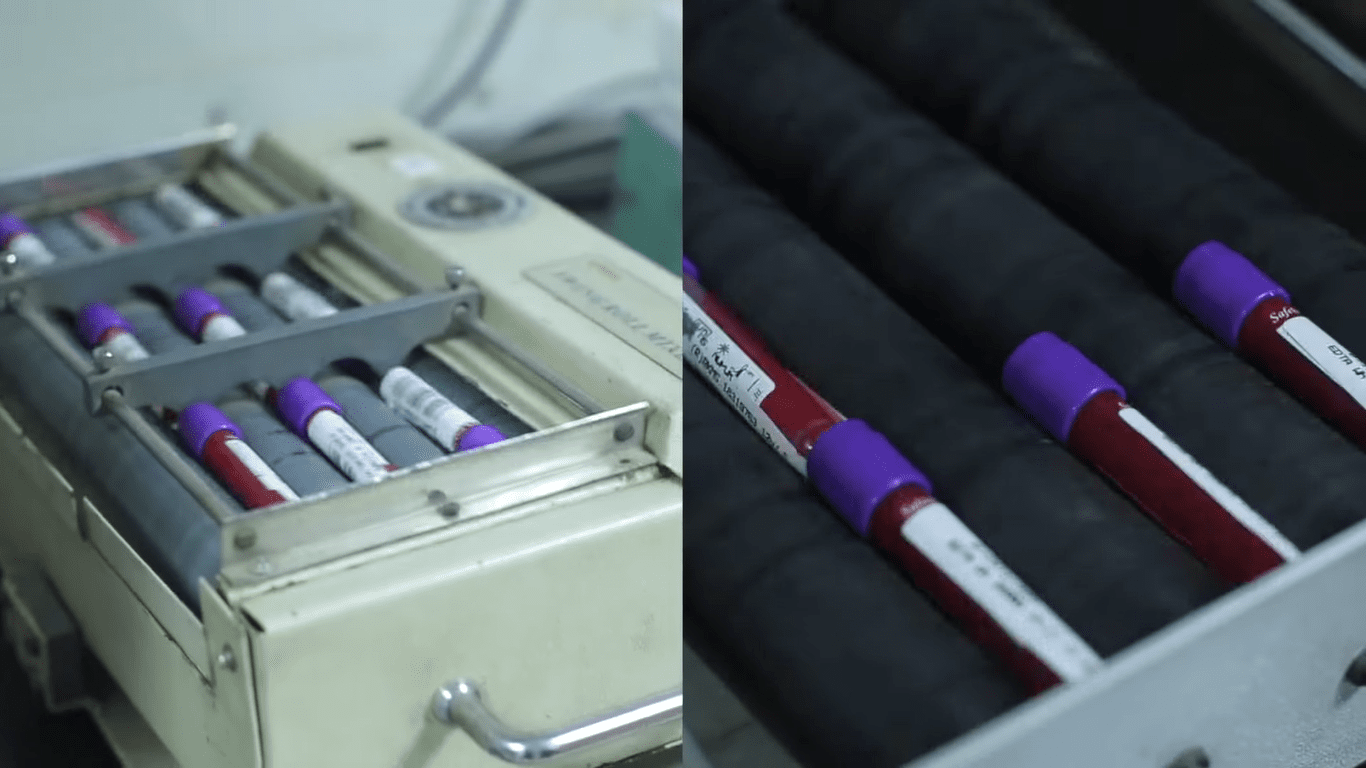
Hematology is the branch of medicine concerning the study of blood, the blood-forming organs, and blood diseases. Hematology tests include laboratory assessments of blood formation and blood disorders.
Some examples of these tests are:
Full blood count - A count of the total number of red blood cells, white blood cells and platelets present in blood.
Blood film - Blood is smeared over a glass slide that is stained with specific dyes and viewed under a microscope. The number, shape and size of blood cells and the presence of any abnormal cells or immature cells are noted. The stain used for reticulocytes or immature red blood cells is Heilmeyer's reticulocyte stain. Staining may flag up abnormally shaped red blood cells such as sickle cells or spherocytes.
Staining may also detect blood parasites such as malaria, toxoplasmosis, and microfiliariasis.
Assessment and staining of immature platelets or megakaryocytes may also be performed.
Assessment of granulocytosis.
The erythrocyte sedimentation rate (ESR) may be tested.
The bone marrow may be examined.
Iron status and anemias are assessed using tests such as serum ferritin, vitamin B12 and folate levels.
The Coombs' test or antiglobulin test may be used for blood typing and blood matching prior to blood transfusion, for example.
Platelet function in bleeding and coagulation may be checked using a test called prothrombin time.
Diascopy is a technique used to determine whether a lesion is vascular, nonvascular or hemorrhagic.
D-dimer assessment may be performed to check for thrombotic disorders.
Electrophoresis may be used to examine proteins in the blood such as hemoglobin and to check for hemoglobinopathies such as thalassemia or sickle cell anemia.
The enzyme G6PD may be assessed in sickle cell disease.
Fine-needle aspiration of lymph nodes and tumors.
Examination of spleen biopsy.
Immunocytochemical techniques for detecting antigens both inside and on the surface of cells.
Assessment of storage diseases such as Gaucher's disease, Niemann-Pick disease and glycogen storage disease.
Assessment of chronic myeloproliferative disorders using bone marrow and blood examination.
Assessment of hemophagocytic syndromes.
Karyotyping to look for chromosomal disorders and abnormalities

